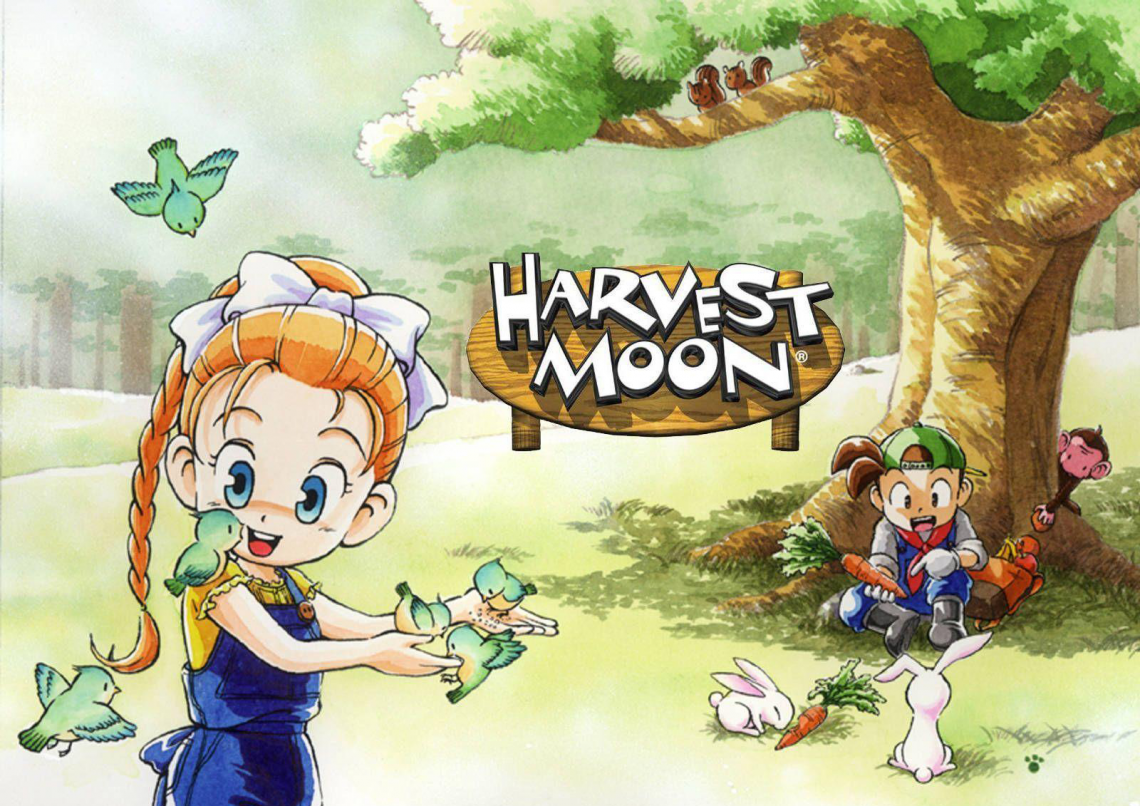
The Harvest Moon video game series was one of my all-time favorite series, and I came across this series by chance. When I was in grade school, long before I had my own money, the only way to try new games was to borrow them from friends. The first time I heard about the Harvest Moon series was from a friend who had a GameCube and lent me Harvest Moon: It’s a Wonderful Life. After spending an entire school week and weekend playing it, I immediately knew I had to make it my own. See, the cover doesn’t really say much. I think the only thing I was really drawn to was the character designs and the cute animals on the cover.
But that wasn’t the end of it. I also bought the girl’s version of Harvest Moon: Another Wonderful Life for GameCube. Then, when I got a Game Boy Advance SP in 2003, I begged my grandmother to buy me Harvest Moon: Friends of Mineral Town and other games. In fact, she loves farming just as much as I do, and while eating at the dinner table, she would often ask me, “What did you do on the farm today?” It was a lot of fun, and the bonding experience was really touching.
Farming games are pretty popular these days (Stardew Valley, I mean, you…). And for good reason. Most people point out that the Harvest Moon titles have gotten a lot worse, and there are many reasons for that. These days, Harvest Moon looks like the game where you search for it on the App Store, scroll to the bottom, and choose one of the last search results. You know what I mean? Nothing good ever happens there. How did that happen? Well…
The first Harvest Moon game (the series is known as Harvest Moon) was released on the Nintendo SNES in 1996, and since then there have been several releases, alterations, translations, and even new titles released. Harvest Moon, known to many as Story of Seasons, is a farming simulation RPG. The Harvest Moon games were originally created by Yasuhiro Wada and developed by Victor Interactive Software, which was later acquired by Marvelous Entertainment and continued producing these games (since 2013) under the new title Story of Seasons. A summary of the reasons for the title change can be found here.
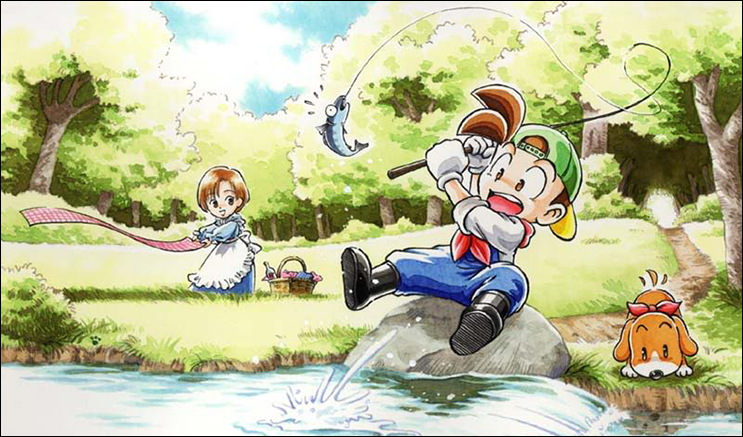
Essentially, Natsume is the publisher of the original Harvest Moon games, owns the original rights to the Harvest Moon name, and continues to create their own games under that title. I turned away from those titles because Natsume’s Harvest Moon had significant flaws. Unfortunately, the new titles Story of Seasons also went downhill quickly, with the exception of Story of Seasons: Trio of Towns, which I loved and dearly hoped for. I think the release of Story of Seasons: Pioneers of Olive Town on the Nintendo Switch will live up to my expectations, but unfortunately it will come after the re-release of Harvest Moon: Friends of Mineral Town in 2020, during which the original Game Boy game crashed and burned. The series retained none of the features that I knew and fell in love with as a kid.
I want to take a look at some of my favorite Harvest Moon titles and see what makes them special compared to the recent releases. Like most Harvest Moon games, there are dozens of activities you can do and characters you can interact with. The whole goal is to run a farm and live a happy life.
Your first big job is to clear your field to grow your crops. Clearing out rocks and weeds is hard work and even a bit tedious at first, especially in the early game when you have no items to restore stamina and you need to avoid fainting. This makes the game start very slow and those with short attention spans will not be satisfied with the experience, but I have always enjoyed this part the most.
Once you have cleared your field, it’s time to start the exciting task of growing your crops. As a child, I had a very handy guide to It’s a Wonderful Life. This guide showed the different crops that grow in different seasons, how long they take to grow, and how much profit you can get from some of the crops. The amount of fertilizer to use and the type of ground you chose to plant your seeds in. If the soil type was not optimal, plants would take longer to grow and the quality would be poor if fertilizer etc. was not added. Later in the series the difficulty increased with the introduction of different types of fertilizer, crop quality rating and crop quality requirements to win the Cooking Festival and Harvest Festival.
You have to do every action like a real farmer, which means buying the right seeds, seeds that can produce valuable crops in the shortest possible time, cultivating the land, planting the seeds, and watering it every day. Eventually, you can upgrade your tools, such as a watering can, to be able to hold more water, but that requires working in the mines, which requires stamina. Do you know where this goes? This is the most basic activity of the game, and you will get used to it quickly. The hard part is that at first you’re limited by your low-budget equipment, but the tasks quickly pile up.
But these tasks become an obstacle when you remember the time pressure to marry that cute girl from the library, or that unused fishing pole you got from that guy in town lying around in your inventory. You have to find the time and energy to tend to the fields, brush the cows, talk to them, milk them. Every. Another. days. The balance between daily tasks and seasonal or yearly events is the essence of the game. You often don’t realize when and how you should have done something until it’s too late. Make sure you’re well prepared for next year.
Time is a very important factor in Harvest Moon, not only because you have a limited amount of time to complete your daily goal, but also because there are various time-sensitive activities and events that can affect how close you get to your goal. The end of the game comes.
Harvest Moon 64
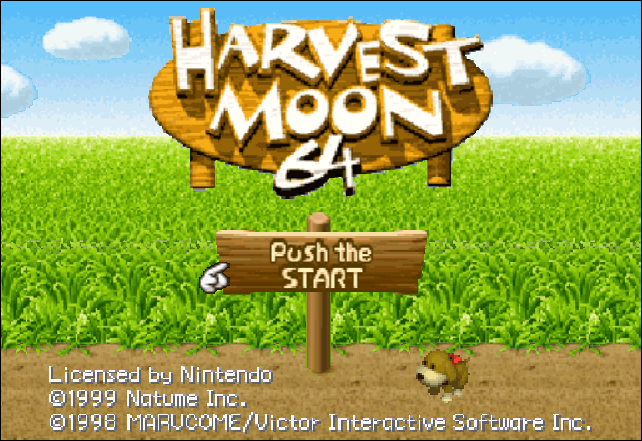
Harvest Moon 64 was released in Japan and the West in 1999 and was the fourth game in the series. At this point it felt like the developers had finally figured out what they wanted to accomplish with Harvest Moon. The first thing that really impressed me was the art style. It was cute and cozy and started the game off like most other games in the series. You take over a farm from your grandfather and are tasked with expanding and maintaining the farm while also convincing villagers to add to your family. Rivals in town who you must compete to win her affection.
Overall, the game was really, really difficult and exhausting, but also incredibly rewarding depending on how many hours you put in each day. After about a little over two years, your character’s father returns to measure your progress, leading to a few different endings. The game days went by pretty quickly, which was probably the weakest aspect of the previous version, but that extra challenge and pre-planning of what you want to accomplish on that day made the game much more enjoyable for me.
Harvest Moon 64 has five bachelorettes. Each girl has a visible heart color that indicates her affection for the player. You can bring your rivals together or carefully separate them to ensure you marry the bachelorette of your choice. The festivals were a bit sparse, but forgetting to attend one or two festivals could hurt you later, especially depending on which ending you’re aiming for. Time pressure was also a recurring obstacle in early Harvest Moon games. For example, in Harvest Moon: Back to Nature on Playstation One, at the end of three years, the village votes whether you can stay or if you need to pack up and move on. The game always ends after three years. The player’s goal is to grow crops, raise animals, get married, and have children before this period ends. Back to Nature has 20 different endings, each with their own unique requirements.
I really enjoyed the time pressure in this game, and it reminded me of the end-of-year requirements in Harvest Moon: A Wonderful Life on the GameCube. If Harvest Moon 64 was your first Harvest Moon game, it might have been a little too easy, considering that A Wonderful Life ends after the first year if you don’t choose a spouse.
Harvest Moon: Another Wonderful Life
This was the first Harvest Moon title for the Gamecube (2003) and also the first Harvest Moon game I ever played. This game is what got me hooked on the series and while I’ll probably never finish the story because it’s so sad, there are some features I’d like to see brought back.
The title of this game is very misleading. See, it’s more about the fact that many characters die in this game, including the player character. The game consists of a total of 6 chapters and lasts for about 10 years, or 400 days. During this time, villagers will die, and livestock will also die of old age. This feature was shocking, but it required players to plan their cattle breeding to ensure a steady income from by-products. However, this feature is not perfect.
In the remake version of Friends of Mineral Town (2020), animals on the farm and stables cannot die, but you can increase their affection cap by breeding them. For example, a brand new chick purchased from a chicken farm will have a maximum of three hearts at the beginning. He won’t lay anything but small eggs, and unless you increase his affection max, he’s sure to win the Chicken Festival. How can you do that if his affection cap is 3? You have to put the eggs you lay in an incubator, and the chicks that hatch from them are given up to 4 hearts, etc.
I wish Wonderful Life had this system too, but because Wonderful Life’s animals have no affection limit whatsoever, and their byproducts have no quality rating, it sometimes seemed like it was very necessary to breed, even if it was cheap. I wish Friends of Mineral Town did this better as well. In both the original and the remake, cows can only be purchased and cannot be bred, but there is a quality system in place that allows you to increase affection and win festivals. Animals in the remake never die of old age, so there is no reason to increase the quality of their by-products. I wish they had combined the two systems.
Making money on the farm can be very hard. One way to do this is to manually add fertilizer to plants one at a time to increase their quality. It’s just a shame there are no festivals.
Harvest Moon: Magical Melody
Harvest Moon: Magical Melody was released in 2005 on the GameCube and later on the WiiU console. I loved the chibi-ish graphic style of this game and played it over and over again, even though the game duration was very short. Your goal is to discover the magic notes and free the petrified Harvest Goddess. That’s it. That’s all there is really to do in this game. Once you complete this task, you’ll be able to do whatever you want.
At the start of the game, you can build a farmhouse on one of three plots of land. All have different floor types, making the game very easy or very difficult depending on your choices. I liked being able to buy more land by befriending Mayor Thomas, and choose which plots to build a farmhouse on or use as farmland. Villagers move in and out of town depending on the season and how long it takes to interact with them, which can affect how long it takes to marry a particular one. For example, Lyra the Flower Girl will only move into your town on the 23rd of Spring, during the Flower Festival. If you don’t talk to her then, you’ll have to wait until next year!
Harvest Moon: Friends of Mineral Town
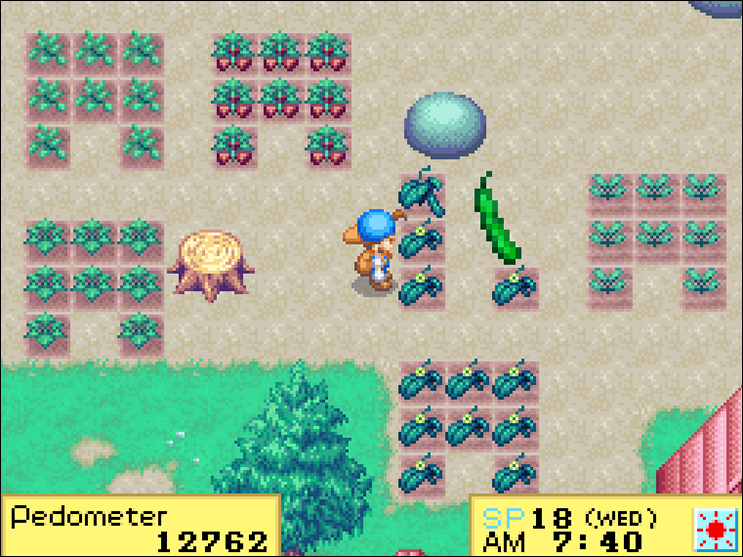
Harvest Moon: Friends of Mineral Town (2003) was the first game developed by Marvelous after acquiring Victor Interactive Software. Most of the characters from this game, along with their rivalries, have already appeared in Harvest Moon 64 and Harvest Moon: Back to Nature. To be honest, if someone new to the series asks me, “Which Harvest Moon game should I play?”, I would choose this one. It’s portable and combines all the good things about the Harvest Moon series in a great way. It’s also the simplest Harvest Moon game, which can be enjoyed by beginners and advanced players alike.
If you have been paying attention, you would have noticed that Wonderful Life for GameCube was released around the same time as this game and has a very unique connection system that offers some fun features when playing Friends of Mineral. Connect the town to Wonderful Life for GameCube with connection cable.
You can marry six girls: Anne, Eli, Fertility Goddess, Karen, Mary, and Potpourri. However, to get married in Harvest Moon game, you need to meet certain requirements, such as: B. Build a farm, improve your house, and woo your marriage candidates.
It is actually a lot of work, and that is exactly what makes getting married in Harvest Moon so much fun. In fact, in Wonderful Life for GameCube, if you do not propose to one of the marriage candidates by the end of the first year, it will be game over. There’s no strict timeline in Friends of Mineral Town, but rival marriages can help players get a head start (though the rival marriage option was removed from the Nintendo Switch remake…).
When I married Popuri, my first thought was, “Hahaha, Kai, get this!” I can’t date Popuri anymore! But I was totally wrong.” Kai has left home and is playing at the beach with his fiancée, Popuri. My next attempt was to marry the boy version of Ellie. But I took really long, and by the time I realized it, Doctor had crushed on her at the end of their fourth year before I had a chance to propose to her. Rival marriages can be unlocked over the course of four in-game years, but in the case of Ellie and Doctor, I accidentally triggered all of the heart events without realizing it.
The Harvest Goddess is a special candidate with no heart mark next to her name. So you have to guess how much she likes you by giving her gifts every day and unlocking special heart events. A Goddess has no enemies in her affections, but that doesn’t make it any easier. And she won’t live with you after you marry her. Isn’t it pretty lame to marry someone you don’t want to live with? But I always thought that was the fun part. If you’re interested in the marriage requirements for the Fertility Goddess in Friends of Mineral Town, Fog has a well-written guide here. The requirements seem to be the same as for the original Friends of Mineral Town.
Another thing I really liked about Friends of Mineral Town on Game Boy was the never-ending hunt for Power Berries. Power Berries essentially solved the problem of in-game time passing and stamina quickly running out. Game days go by quickly, but finding Power Berries boosts your stamina, allowing you to spend more time on daily activities and tasks such as: B. tending to your crops, spending time in the mines, and fishing. The more Power Berries you have, the more activities you can do throughout the day instead of going to bed earlier and waiting for the next day to recover your stamina. Of course, you can spend money on meals at Doug’s Inn or cook for yourself once you’ve finished building your kitchen, but at the start of the game you don’t have the money or resources to do so. You often run out of stamina and have to choose between selling or eating wild items you find in the mountains to recover your stamina. It was fun finding Power Berries and gradually getting stronger as the seasons progressed.
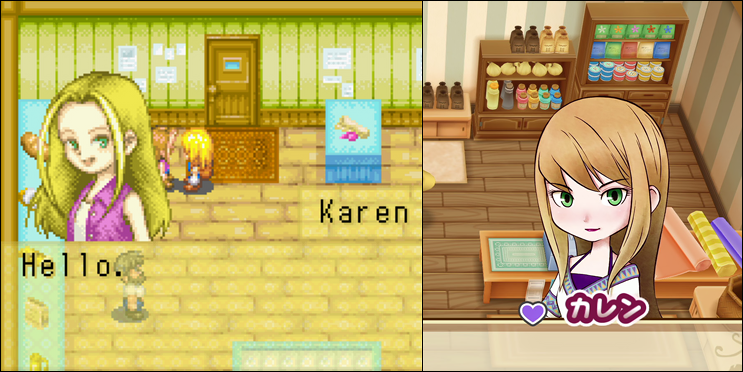
Because A Wonderful Life and Friends of Mineral Town were released at the same time, you could connect your Game Boy to your GameCube to meet characters from A Wonderful Life and unlock other cool stuff in Friends of Mineral Town. Incidentally,
Friends of Mineral Town was re-released for the Nintendo Switch in 2020, but with a number of changes to the game that I don’t really agree with, such as the removal of rival marriages. You can read my other complaints here. ?The original Friends of Mineral Town game includes four rival events where couples get married. These rivalry events are triggered based on your romance point levels with your marriage candidate.
The criteria for triggering a rivalry event is measured by the contestant’s lack of affection towards you and their current year in the game. The contestant had to have a minimum heart level or a lower heart color for the rivalry event. Essentially, these rivalry events were the opposite of romantic heart events, triggered when affection levels were low. If a contestant’s heart color was black, all rivalry events for that contestant could be triggered after completing the required number of years of play.
The reason remains a mystery to me, but in the new version you can watch the first two rival events for each candidate, but nothing happens from there. The remake also removed the possibility of animals dying, so it’s easy to not feed your animals if you’re not in the mood or are too busy tending to your fields or talking to villagers. This new version has absolutely no negative effects. Festivals feel empty due to the lack of rewards, and some players still complain about a glitch that causes animals in the stable to stack on top of each other, making them difficult to feed.
The remake offers some nice additions, including two different difficulty modes: easy mode (for beginners) and normal mode (for experienced players).
Harvest Moon DS
I’m currently replaying Harvest Moon DS on my Nintendo 3DS and am rediscovering a lot of things I really missed about the Harvest Moon series. Harvest Moon on the Nintendo DS was actually very difficult, and the series had some marriage candidates that required special effort and patience. This brought a whole new challenge to the Harvest Moon series, on top of running a profitable farm and taking care of livestock and crops.
Harvest Moon: Friends of Mineral Town had a special marriage candidate, the Harvest Goddess (do you think you can marry a Kappa? I don’t know). The conditions were definitely difficult, but nothing compares to the conditions required to marry. Marry the Fertility Goddess or Witch Princess from the DS games. Oh my god this game is hard.
Besides the difficult conditions for marriage and the really tedious celebrations, the game felt repetitive at times and the character dialogue wasn’t that great either. Most of the time, you spent your day getting up and watering your crops (or the elves did it for you), cultivating the affection of your livestock, making friends with villagers, and exploring caves in the mines until you passed out. Despite the repetition, there were plenty of extra tasks that required work, such as upgrading your house, upgrading farm buildings, and winning some festivals.
Oh, and the game doesn’t offer a way to increase your stamina with power berries, so you run out of it quickly. When your stamina and health prevent you from doing farm work every day, the tediousness of this game becomes even more pronounced. Of course, you could use up your resources and cook for yourself, but why would you do that? This game doesn’t even have a stamina bar or a cafe where you can buy food that restores stamina.
There are bars in towns, but there are no health bars, so it can be hard to estimate how much stamina (if any) you’ll recover after just a few drinks. I was surprised that this game doesn’t have a stamina bar and power berries, considering that almost every other Harvest Moon DS game has them (well, it seems that Harvest Moon DS Cute, the female version of this game, doesn’t have stamina bars and power berries either…).
If you’re short on money, you can use the save/shop trick in the mines and dig up gems to sell. Harvest Moon DS had a new crop ranking system that allowed you to “level up” your crops and increase your profits, but by the time you unlock it you’ll have more than enough money to do anything you want in the game. The biggest drawback in my opinion. While the challenging aspect of Harvest Moon was apparent, it lacked replay value.
Story of Seasons: Trio of Towns
Character dialogue in Story of Seasons: Trio of Towns was phenomenal, numerous festivals across the three cities filled the calendar, trying to woo your favorite characters came with its own challenges, both animal by-products and crops were a pain, a unique star quality system – and whopping, the game featured over 40 crops unique to each city! Marvelous did everything right with this game, but it was the last game that piqued my interest.
I can’t say exactly why the developers of Story of Seasons failed with Story of Seasons: Pioneers of Olive Town, but it was a mess compared to Trio of Towns on 3DS.

Leave a Reply